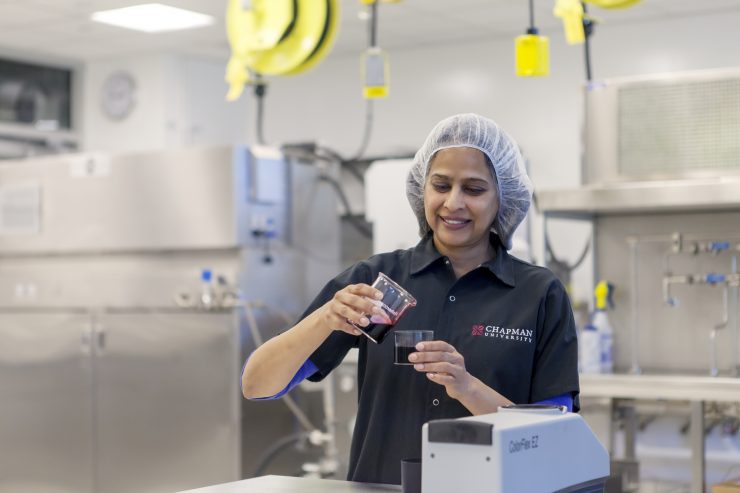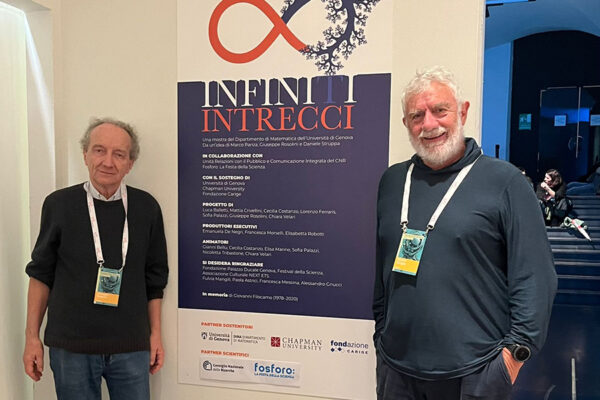When Costco recently introduced a 27-pound tub of mac-and-cheese packets with a 20-year shelf life, the stuff sold out in a day. It’s unclear whether the product was scooped up by doomsday planners or working parents too tired to even think about peeling a carrot for the next two decades.
But the staying power of the cheesy concoction sparked our curiosity about the science behind food preservation. How do manufacturers make food products that last for 20 years or longer? Are they safe? Are they healthy? Fortunately, the director of Chapman University’s Food Science Program has answers.
Anuradha Prakash, Ph.D., is an expert in food processing and preservation whose most recent research focuses on safety and shelf life of fresh-cut vegetables and ready-to-eat meals. Among the agencies that have funded her work are the National Science Foundation and the U.S. Department of Agriculture’s National Institute of Food and Agriculture and Foreign Agriculture Service. Turns out, technology food scientist studies are vital to busy consumers as well as the military, NASA and relief agencies faced with the challenge of feeding people in extreme situations, from weather disasters to refugee crises.
And—a happy note for many— it’s not all about buckets of mac-and-cheese.
Why the demand for foods that can last and last?
“Many of the technologies for foods that have an extended shelf life were developed by the military and NASA because they need nutritionally complete and safe food that will maintain quality for extended missions. Some religious groups have a practice of storing food supplies. In some areas of the world, shelf life is a necessity; the climate is not suitable for growing food. In such places, fresh food such as milk needs to be trucked in. But if the infrastructure for refrigerated transport does not exist, dry milk powder is an option. Another option is aseptic packaging, like Tetra Pak, that provides the necessary shelf life in places that do not have the luxury of refrigeration in stores or in homes.
Emergency rations for disasters is another reason for extended-shelf-life foods. And in the U.S., convenience is an important feature to people with busy lives and limited time to shop and prepare food every day.”
How nutritious are extended-shelf-life foods?
“Some nutrients such as vitamins are heat sensitive and time sensitive, so over time these nutrients will decrease. Fresh foods, especially fruits and vegetables, are very important for health, so I would not suggest that people live on dehydrated or canned food. But as a small component of your diet, it’s fine.”
How are these products manufactured?
“Dehydration and canning are conventional techniques we’ve been using for a long time, but there are newer modifications that help optimize quality, ensure safety and provide convenience. For example, technologies that include microwave and radiofrequency waves shorten processing time, and the result is that better quality is maintained.
Another process they’re using is extreme high pressure. They apply very high pressure to foods—as much pressure as three elephants standing on a dime—and that pressure kills microorganisms. Because the temperature of the food does not increase much, it doesn’t affect the nutritional quality of the food, and it has minimal effect on taste, texture and aroma. This technology, known as high- pressure processing, is becoming more popular. Evolution Fresh juices at Starbucks and nut milks are examples of foods treated with high pressure.
What promising technologies are being developed?
“Some of the newer techniques under development involve application of high- intensity electric pulses, or high-intensity light to foods. The process is quick, and you’re not using chemicals or heat. Cold plasma—also known as the fourth state of matter—can also kill microorganisms that make us sick or spoil our food, so food scientists are excited about their potential.”
Any lessons from the early days of food preservation that we still employ?
“The advent of fire and cooking is said to have occurred about a million years ago, and it’s linked to larger brain sizes in humans. We still employ heat; the techniques are just more evolved.”




